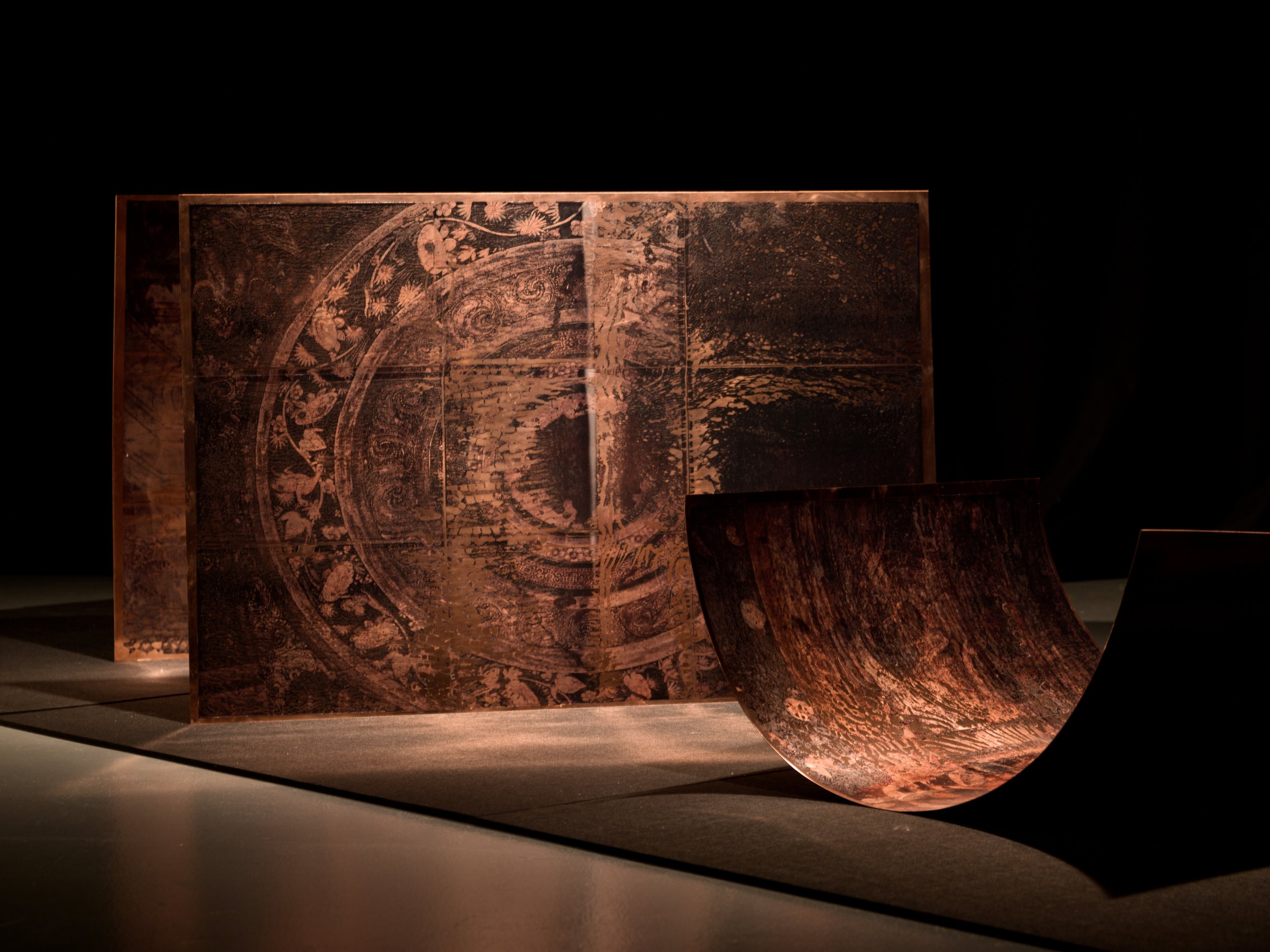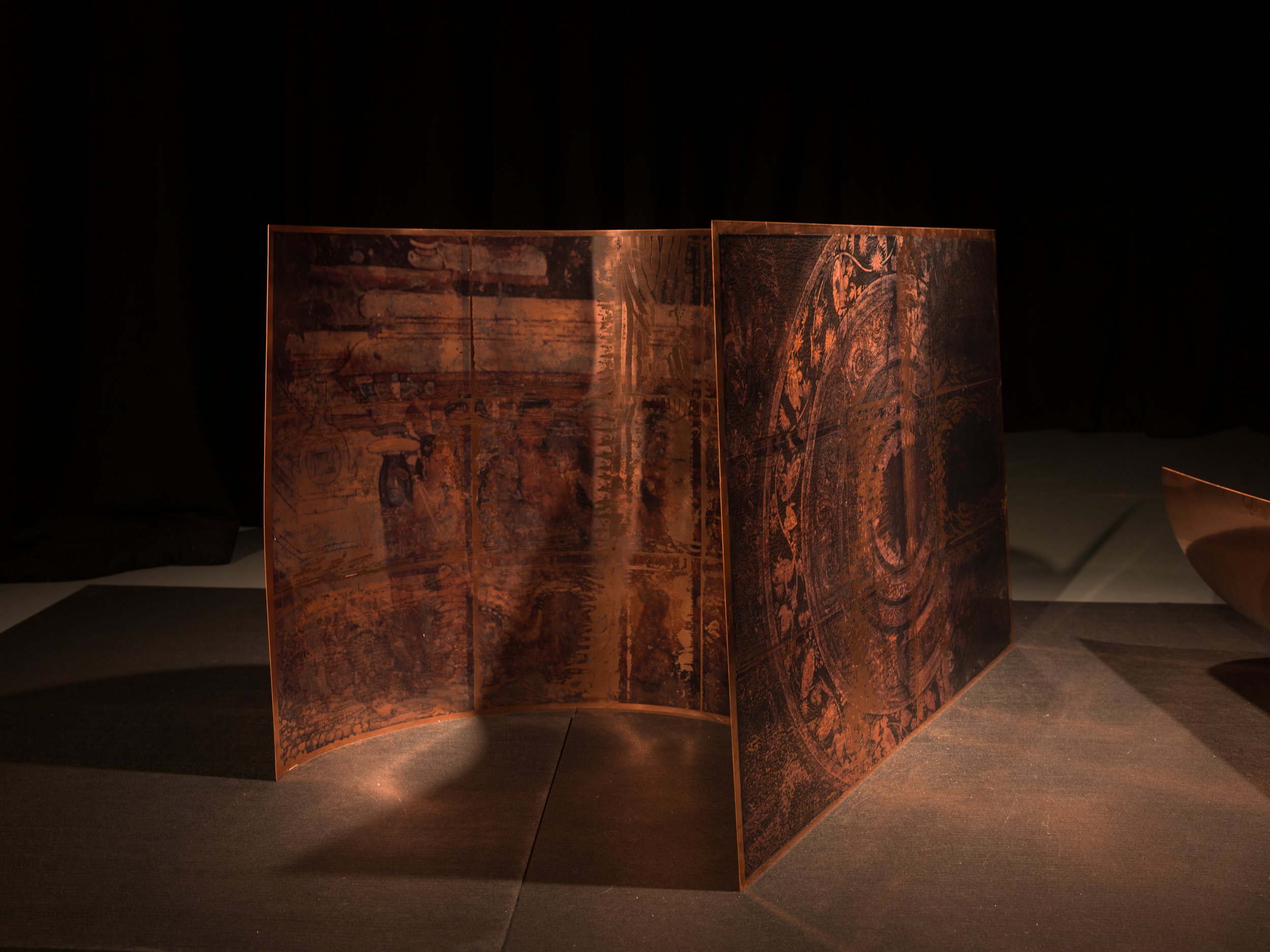Forms of a Fermenting Fantasy
Black Box, UNSW, 2023
Digital print hand-transferred onto copper forms, suspended acrylic screen.
Dimensions variable.
In speaking of Indian sculpture in his Lectures on the Philosophy of Fine Art, G.W.F Hegel writes, ‘what immediately faces us here are the forms of a fermenting fantasy, which in the restlessness of its fantastic dreams merely indicates the path which conducts us to the real centre of symbolic art.’ A dialectical framework becomes apparent: the fantastic against the rational, symbolic against the real, periphery against centre.
This installation work responds to the 2-6th BCE-CE paintings in the Ajanta Caves, Maharashtra India — a dually excavated site; first by Buddhist artisans and then by imperial intervention. Two dialectics emerge out of this encounter of forming and unearthing, the centre/periphery and the art/artefact dialectic. Yet openness has no centre, it is antithetical to origin. It is a force that is outward rather than inward. It exceeds all dialectics. By positioning both the colonial lens and the precolonial object on peripheries, the postcolonial errant can weave in-between installation site, from periphery to periphery collapsing the linearity of past, present and future.
Walking into a darkened room the viewer encounters an amber site, where three beatific forms stand in a tenuous relationship with each other. It is only when one has past the centre point of the room do they realise that their vision had been filtered through a screen, the copper mediated by acrylic resonant of colonial shellac once applied to the original murals of the Ajanta Caves during the 19th century in a quixotic attempt at preservation. The disintegrated murals are circulated to the artist’s camera lens and then to the copper surface, the poor image undergoing several processes of circulation which are further fragmented through the copper resisting capturing the image, indicating its own material agency. While as images, inscription is resisted, as image-forms the copper performs a poetics of (re)inscription. Its oxidisation further obfuscating all attempts at mastery.
Now having arrived at the other end of the room the acrylic screen finds itself suspends in the background, in the periphery — inverting the temporal logic with a spatial re-orientation. Neither is inescapable from each other, the colonial gaze nor the post-colonial (re)inscription. They exist in palimpsest, echoing the atemporal logic of the original mural which can be read right to left, left to right, playing out in simultaneity like the Jataka illustrations of the murals themselves where there is no chronology, no false illusion of origin.





Photos: Chris Mulia